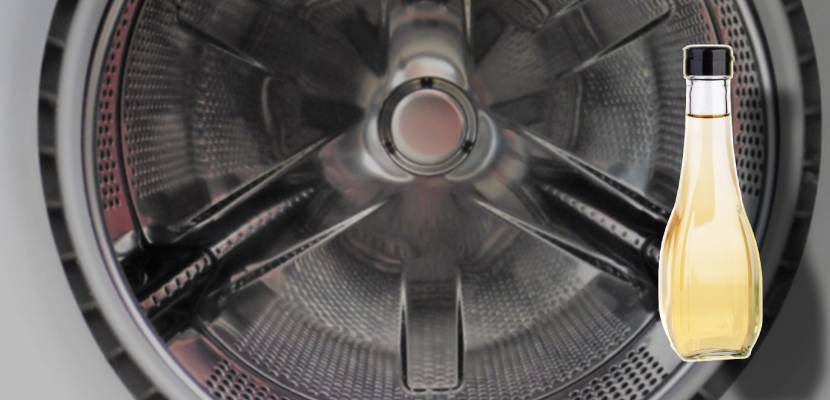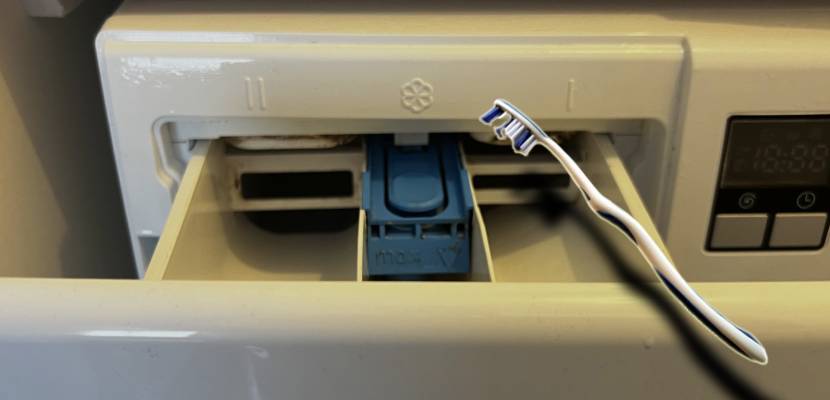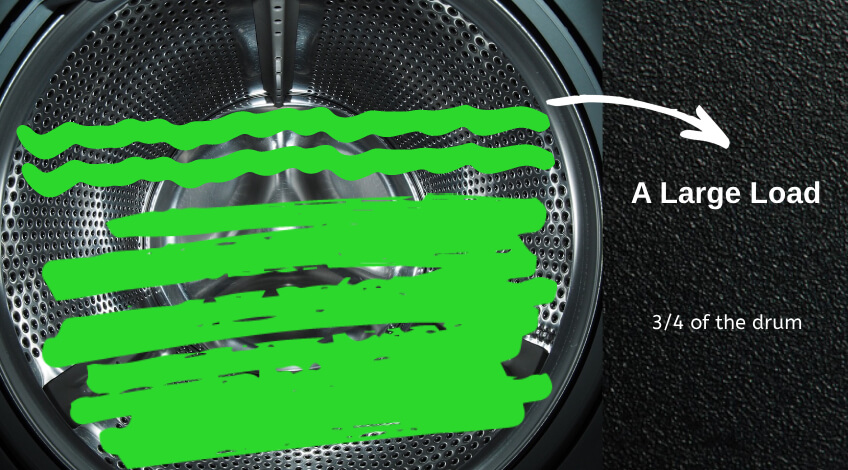
How Often Should You Clean Your Washing Machine?
Cleaning your washing machine may not be the first thing on your mind when you think about household chores. After all, it’s a machine designed to clean your clothes, so why does it need cleaning itself?
Well, the answer is simple: your washing machine comes into contact with all the dirt and grime from your laundry, and it can get pretty filthy over time. It is best to clean your washing machine at least once a month. However, depending on many factors such as how often you use your machine and the hardness of the water in your area, you may need to clean your washing machine more or less.
However, if you want to work out exactly how often you should clean your washing machine to keep it running as smoothly and efficiently as possible, keep reading.
When Should You Clean Your Washing Machine?
Your trusty washing machine dutifully cleans your clothes, but it, too, needs a good cleaning now and then. After all, it handles all your dirty laundry, from muddy socks to bacteria-laden hospital shirts.
But how often should you clean it? Here’s a straightforward guide:
| Cleaning Frequency | Routine | Areas to Clean |
|---|---|---|
| Once a month | Regular Cleaning | Drum, door seal, exterior of the washing machine |
| Once every 2-4 months (depends on usage, water hardiness, and more) | Deep Cleaning | Drum, door seal, detergent drawer, filter, exterior of the washing machine |
Regular Cleaning: Monthly Washing Machine Cleanup
To prevent the build-up of bacteria in your machine, aim for regular cleaning sessions at least once a month.
This includes cleaning your washer’s drum, door seal, and the exterior parts of the machine, especially its knobs and control panel. These are the parts that get dirty the fastest.
Also, don’t forget to wipe your machine’s gasket, as it’s a common breeding ground for mould and mildew due to its constant exposure to moisture.
Deep Cleaning: Every 2 – 4 Months
Doing a deep clean of your washing machine is essential to extend its lifespan.
The more frequently you use your machine and the dirtier your fabrics, the more often you may need deep cleaning. This includes cleaning your washer’s drum, door seal, detergent drawer, filter, and exterior of the washing machine.
Why You Should Have A Regular Washing Machine Cleaning Schedule
Neglecting to clean your washing machine can result in several issues that will affect both your machine and your laundry.
Here are some of them:
Residue Will Accumulate In Your Machine
Over time, dirt, detergent, fabric softener, and soap scum can build up in your machine, leading to foul odours and reduced efficiency.
It Can Cause Irritations
When mould and bacteria grow in your machine, they can contaminate your fabrics, posing health risks, especially if you or your family members have skin allergies or conditions.
It Will Consume More Energy
A dirty washing machine works harder to clean your laundry, leading to increased water and electricity bills.
It Will Reduce The Lifespan Of Your Washer
Neglecting cleaning can lead to mechanical issues, such as a blocked filter full of dirt and hair that strains the motor and pump, ultimately requiring repair or replacement and reducing your washing machine’s lifespan.
Clean Your Washing Machine The Easy Way!
Cleaning your washing machine may sound time-consuming, but it’s quite simple!
All you need are a few household items: bicarbonate of soda, white vinegar, a soft-bristled brush, a tray, and a microfibre cloth.
WARNING: Before you start scrubbing and wiping, always read your washing machine’s user manual. It contains important information on how to clean and maintain your specific model, along with details about your warranty.
Cleaning Your Washer’s Drum

To clean your washing machine’s drum, follow these steps:
- Run an empty hot water cycle with no laundry.
- Add a cup of white vinegar to the detergent compartment.
- Start another empty hot water cycle to remove soap scum, mineral deposits, and odours.
- For a thorough clean, add a cup of bicarbonate of soda in another hot water cycle if needed.
NOTE: Remember to check that your washing machine is empty before starting the cleaning process, ensuring you haven’t left any forgotten laundry or foreign objects in the drum.
Cleaning Your Washer’s Door Seal
To clean your washing machine’s door seal:
- Mix equal parts of white vinegar and warm water.
- Dampen a microfibre cloth with the mixture and wipe the door seal thoroughly.
- Use a soft-bristled brush for hard-to-reach areas, then leave the door open for an hour to air dry.
NOTE: The rubber door seal easily collects dust and debris, so it’s best to wipe it after each wash or leave the door ajar for an hour after use to let it air out.
Cleaning Your Washer’s Detergent Drawer

To clean your washing machine’s detergent compartment:
- Remove the detergent compartment following the user manual’s instructions.
- Wash the drawer under warm water to soften hardened soap and dirt.
- Mix equal parts of warm water and white vinegar, and use a soft-bristled brush to scrub it clean.
- Rinse with warm water and air dry before reinserting it into the washer.
Cleaning Your Washer’s Filter
To clean your washing machine’s filter:
- Place a tray under the filter to catch any excess water.
- Follow the user manual to remove the filter.
- Rinse it under warm water to remove lint, hair, and foreign objects.
- Sprinkle bicarbonate of soda on the damp filter and let it sit for 10 minutes, then gently scrub with a soft-bristled brush.
- Rinse with warm water, dry with a microfibre cloth, and return it to the machine.
Cleaning Your Washer’s Exterior

Cleaning your washing machine’s exterior won’t take much time and should be done regularly. Follow these simple steps:
- Unplug your machine.
- Dampen a microfibre cloth with a mixture of white vinegar and warm water.
- Wipe the machine from top to bottom, paying extra attention to the control panel, buttons, and knobs.
- Vacuum underneath the appliance to remove accumulated dust.
Bonus Tips To Keep Your Washer Squeaky Clean

Use The Right Amount Of Detergent
Using excessive detergent doesn’t make your laundry cleaner and leads to soap scum buildup. Use the recommended amount to maintain a clean machine and reduce waste.
Remove Laundry After The Cycle Is Complete
Promptly remove damp clothes from the washing machine after the cycle ends. Leaving them inside creates a breeding ground for bacteria and mould, resulting in foul odours.
Avoid Overloading Your Machine
Overloading your machine can lead to poor cleaning and strain its components. Stick to no more than 3/4 of the drum’s capacity for optimal results.

Leave The Washer Door Open
Leave the door ajar for at least an hour after using the washing machine to allow proper ventilation, reducing humidity and preventing mould growth.
Wipe Spills ASAP
If you spill fabric softener or detergent in your washer or detergent drawer, clean it immediately to prevent buildup that leads to unpleasant odours.
Use A Limescale Remover
If you live in an area with hard water, consider using a limescale remover to reduce calcium buildup in your washing machine, improving its efficiency.
- Calgon prevents limescale & rust build-up in your washing machine to protect the heating element, pipes and drum of the machine.
- Washing machine cleaner & limescale remover, removes odours, limescale & residue.
A Clean Washing Machine Results In Fresh Laundry!
Remember, a clean washing machine not only keeps your laundry fresh but also extends the lifespan of your appliance, saves you money on bills, and promotes a healthier home environment.
So, give your trusty appliance the care it deserves, and it will continue to serve you well for years to come.
Do you have any questions? Feel free to ask them below!
SEE ALSO: Want Great Smelling Laundry? (here’s everything you need to know)

Frequently Asked Questions
You may notice a musty odour, see mould or mildew, or observe residue buildup in your machine. If your laundry doesn’t smell fresh or your washer looks dirty, it’s time for cleaning.
It depends on your household’s laundry needs. Daily use is fine, but it may require more frequent cleaning to prevent dirt and residue buildup.
To clean the detergent slot, remove it according to your user manual, wash it with warm water, use a soft brush with a mixture of warm water and white vinegar for stubborn residue, rinse, and air dry before reinserting.
For a deep clean, run an empty hot water cycle with vinegar, then with bicarbonate of soda, clean the drum, door seal, detergent drawer, filter, and exterior, following your machine’s user manual.
You can disinfect naturally by running a hot water cycle with white vinegar, which helps kill bacteria and mould. Additionally, leaving the door ajar and using the right amount of detergent can maintain a cleaner, healthier machine.





